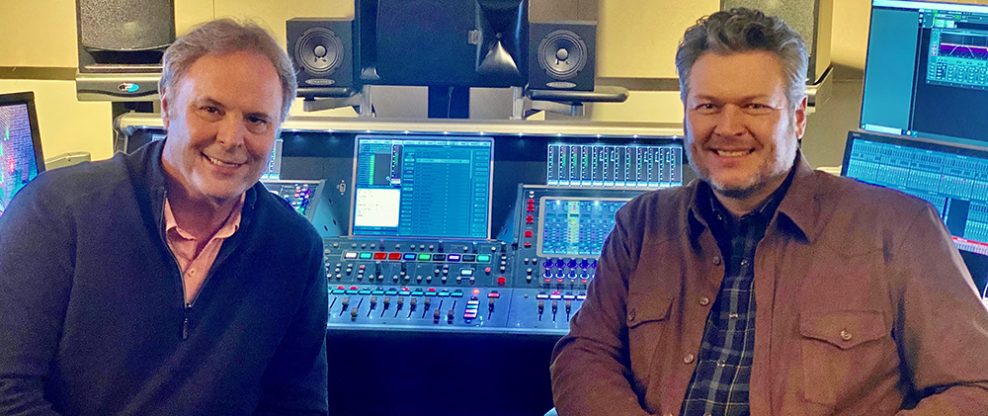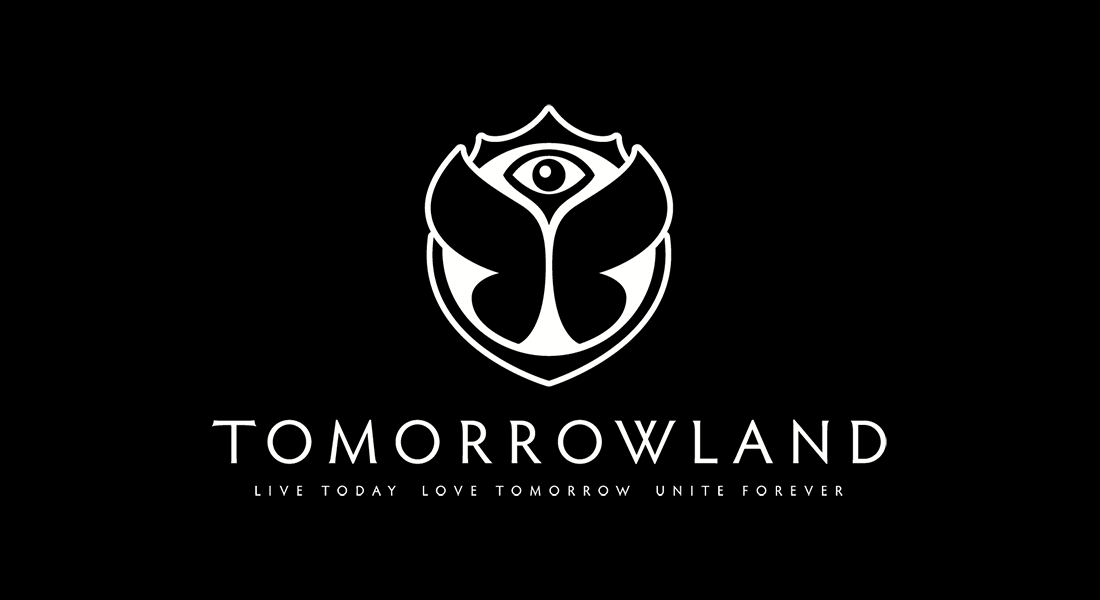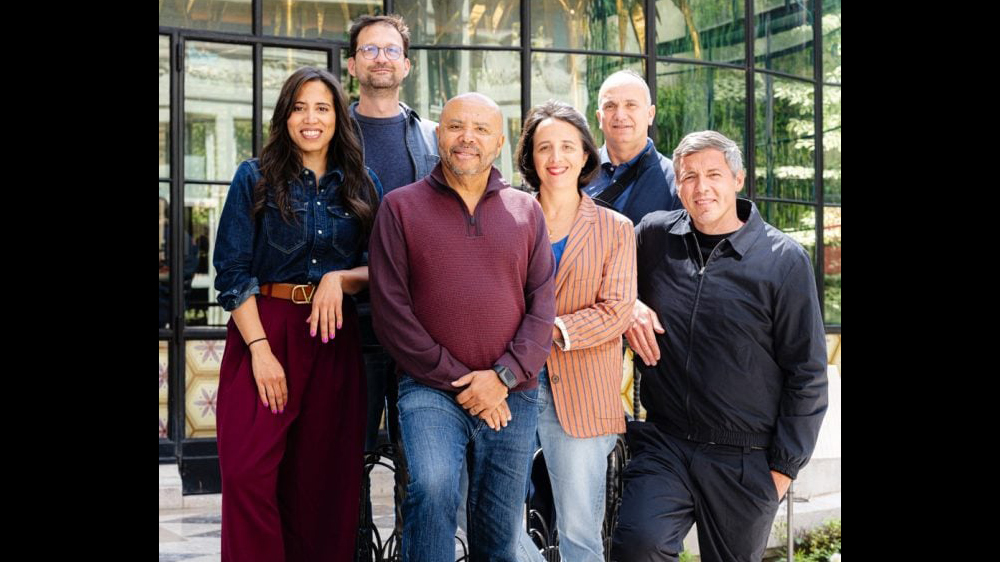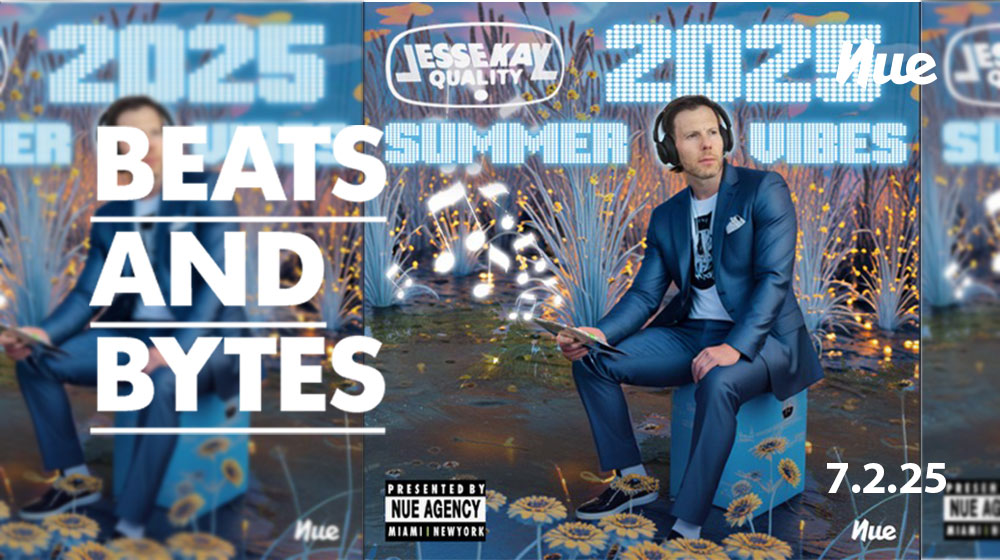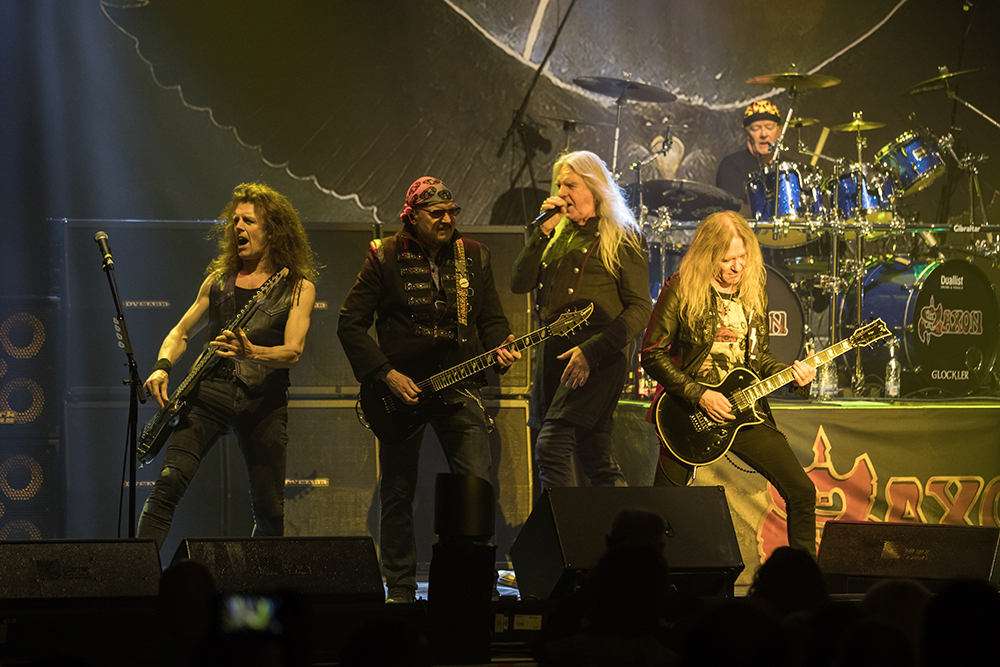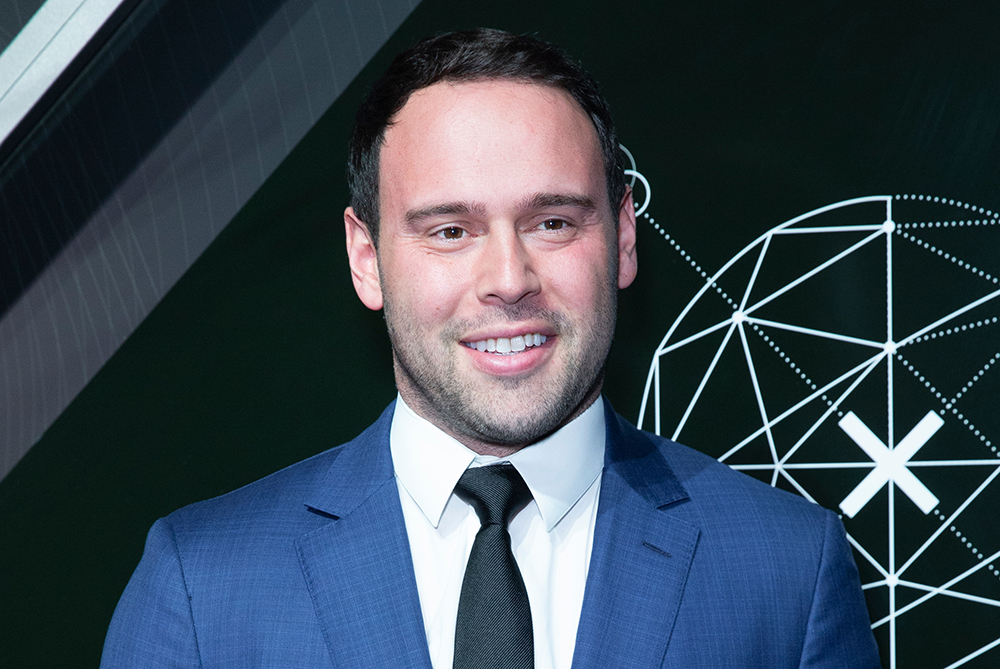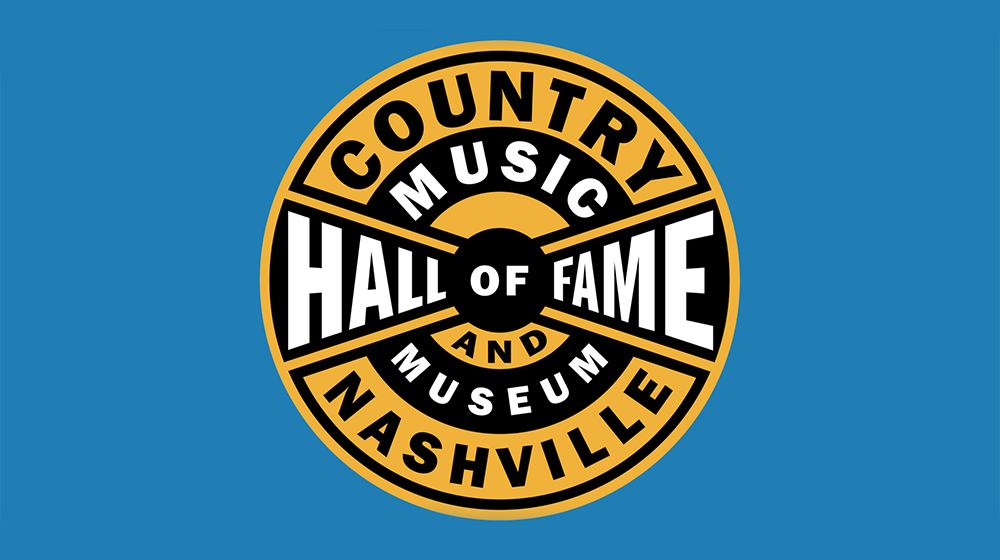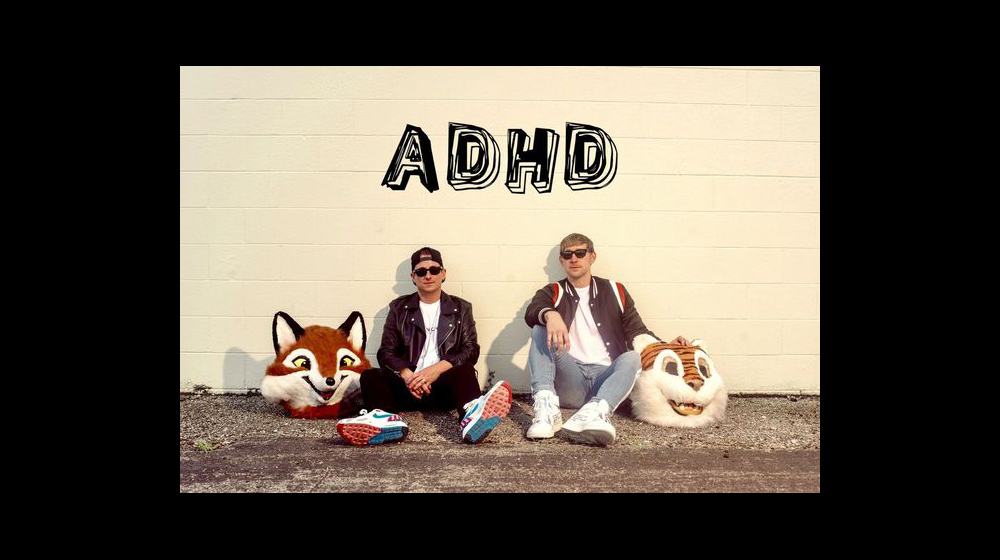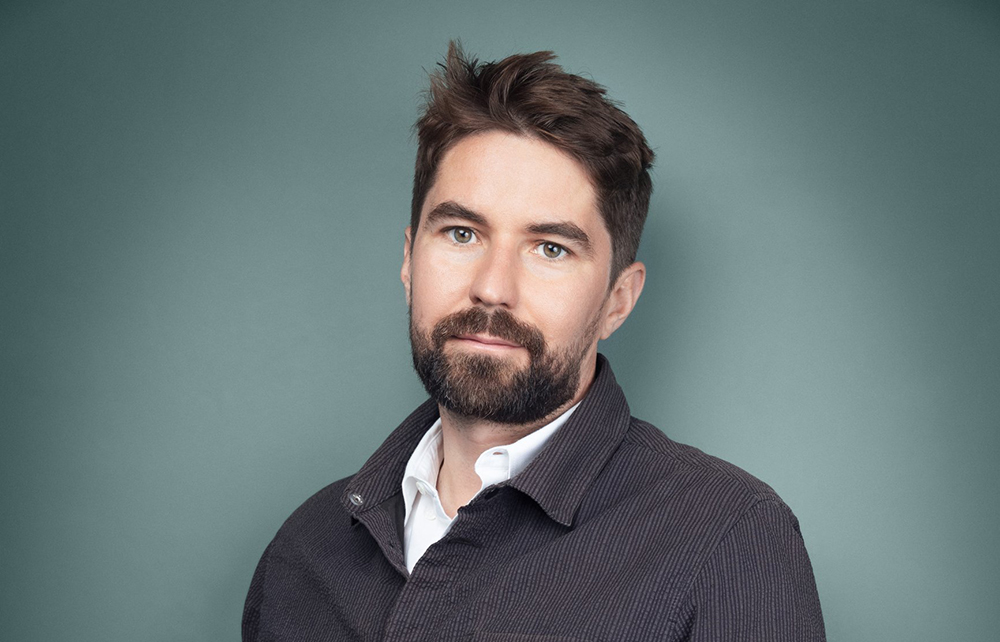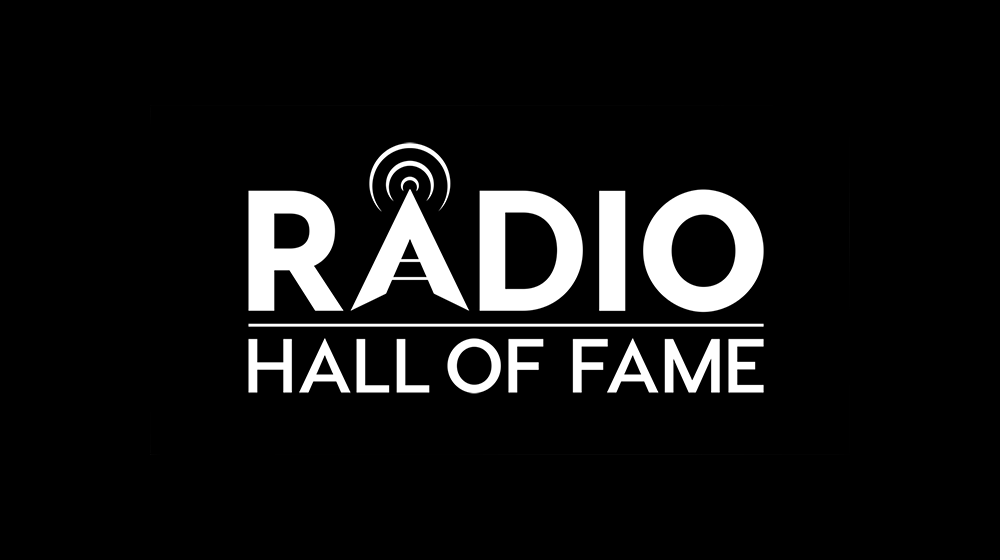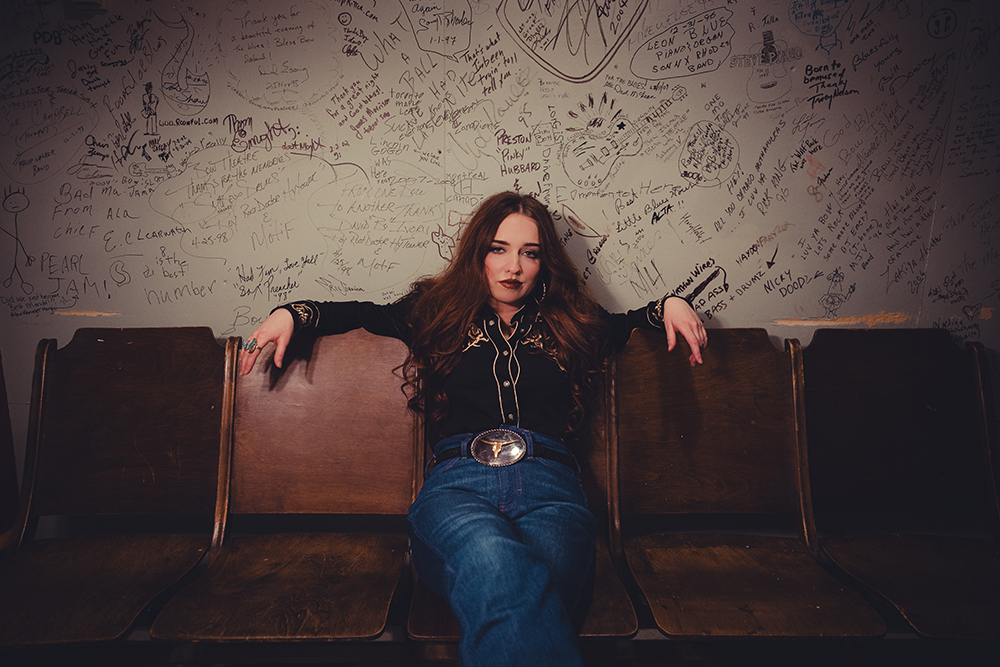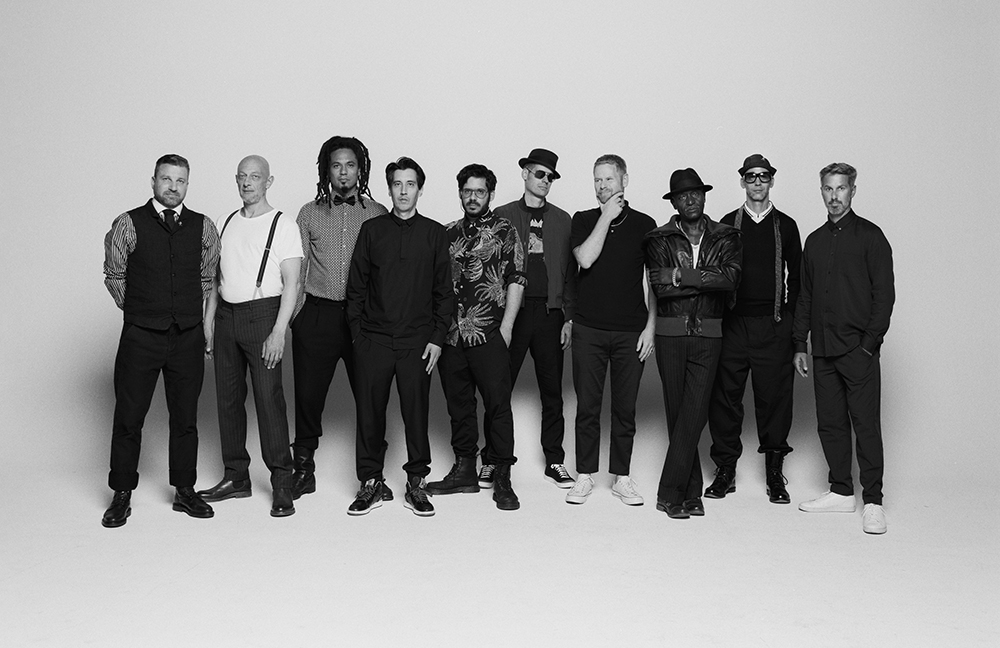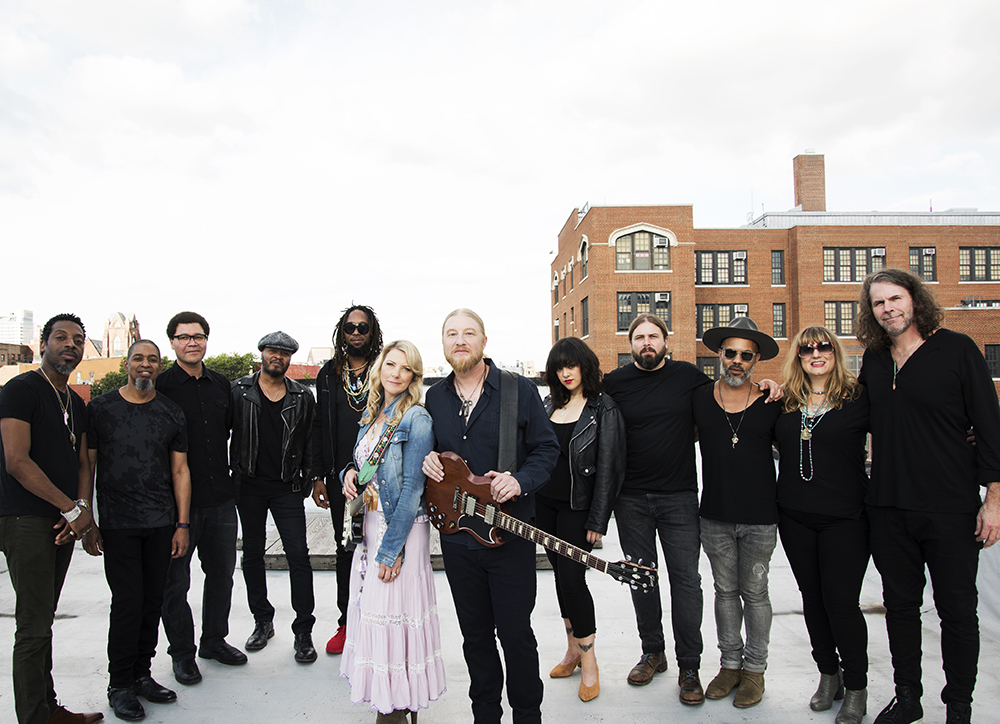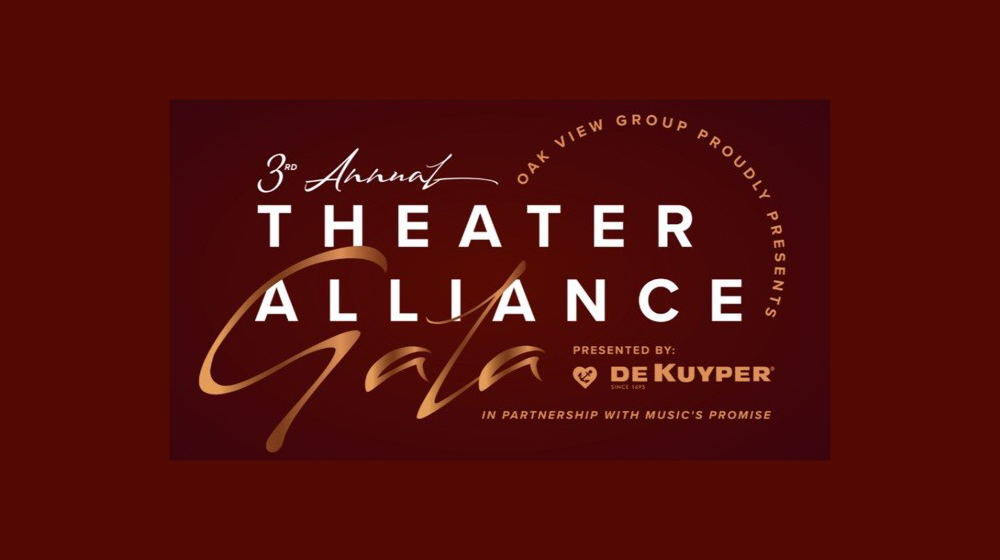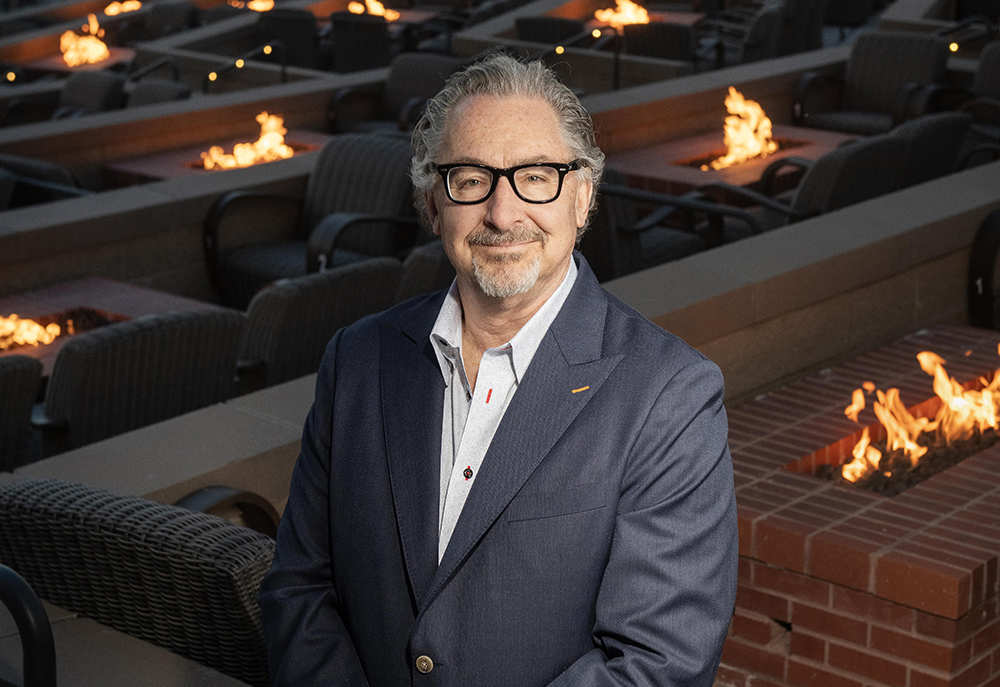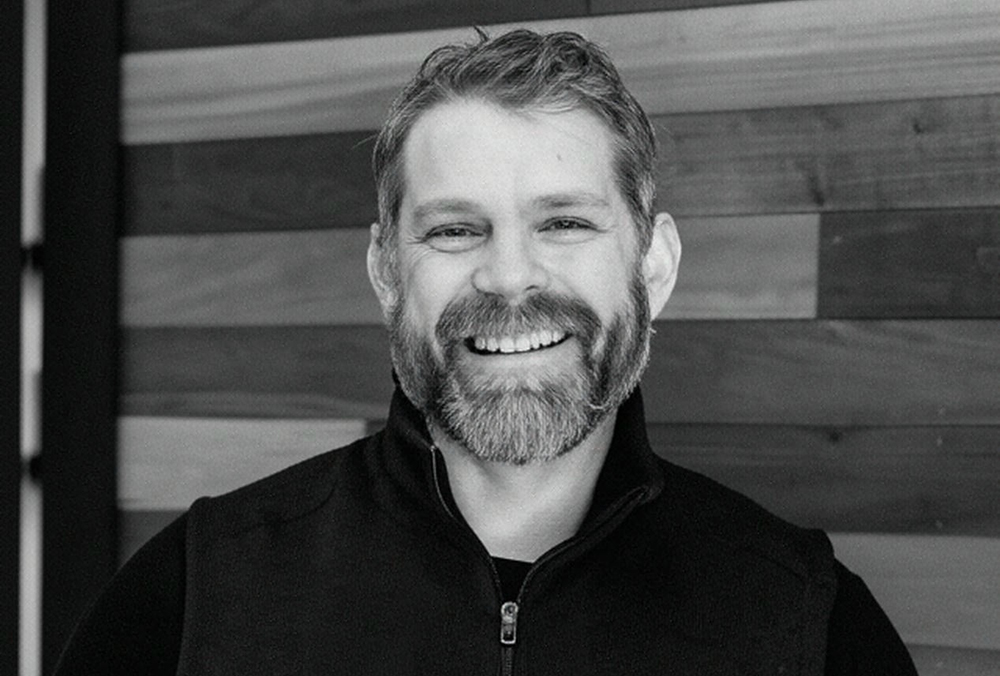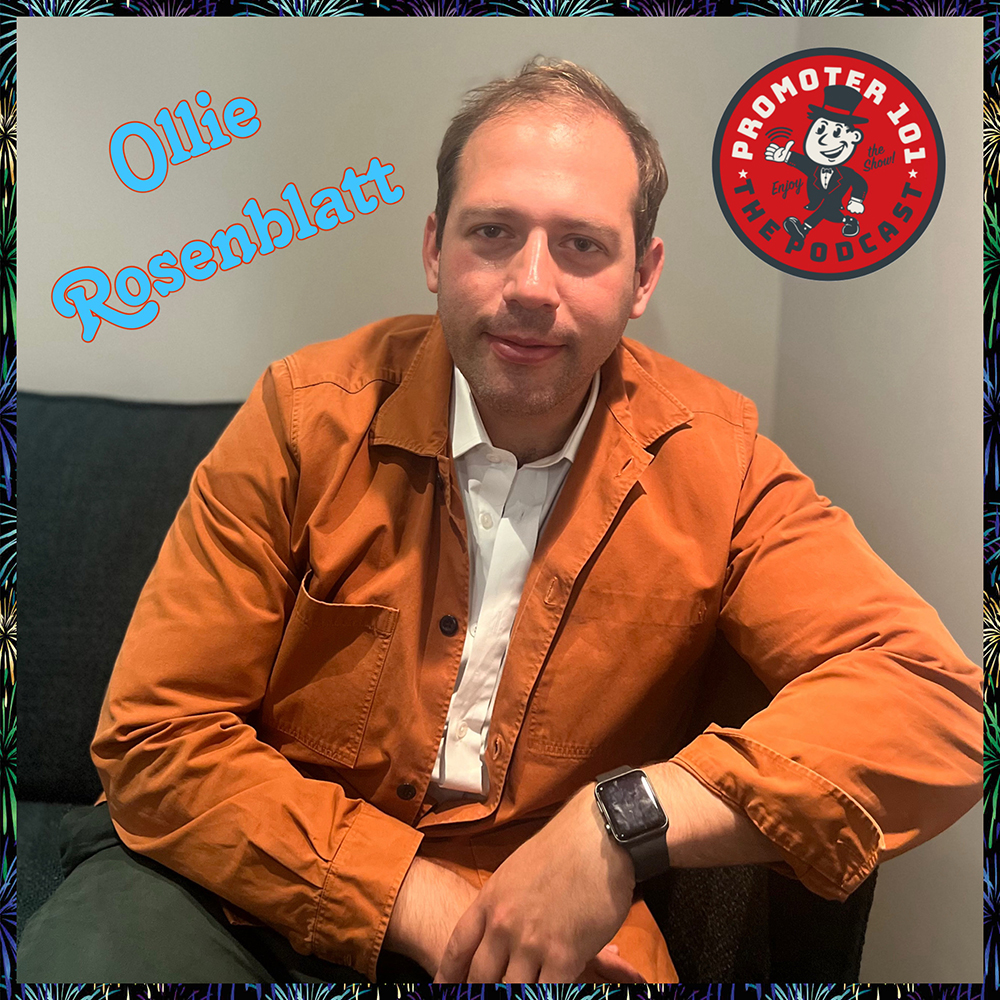This week In the Hot Seat with Larry LeBlanc: Scott Hendricks, EVP A&R/Creative Advisor, Warner Music Nashville.
Scott Hendricks has spent more time in recording studios than most anybody alive.
Certainly more than almost any label executive you might name.
Since Restless Heart’s #1 hit, “I’ll Still Be Loving You” in 1987, Hendricks has produced an astonishing run of 77 #1 country hits and over 120 Top 10 country singles.
All of this making Oklahoma-born Hendricks one of the most successful producers of our time.
His production credits include Alan Jackson, Brooks & Dunn, Faith Hill, John Michael Montgomery, Trace Adkins, Wayne Watson, Steve Wariner, Lee Roy Parnell, Dan + Shay, Tegan Marie, Blake Shelton, and many others.
Following coming to Warner Music Nashville in 2007, Hendricks supervised the A&R staff that discovered and introduced Hunter Hayes, Brett Eldridge, Jana Kramer, Michael Ray, Dan + Shay, and William Michael Morgan.
At the same time, he has produced or directly A&Red projects by Warner Music Nashville artists Blake Shelton, Dan + Shay, Brett Eldredge, Hunter Hayes, and Morgan Evans
Hendricks currently can celebrate having produced 23 #1 country hits with Blake Shelton alone which led to him joining the Ada, Oklahoma superstar four times as a mentor on NBC-TV’s “The Voice.”
Hendricks’ production journey began in 1978.
After graduating from Oklahoma State with a degree in architectural acoustics, Hendrick’s first job in “Music City” was at Nashville Sound Systems, designing and selling equipment to recording studios. He also landed a part-time job teaching engineering at Belmont University for 7 years.
During a sales call at Glaser Sound Studios—aka Hillbilly Central–engineer Ron Treat invited Hendricks to hang out at sessions often helmed by the legendary producer/label executive Jimmy Bowen. Within a year Treat left, and Hendricks was hired on as a full-time engineer.
From Glaser Sound, Hendricks moved to nearby Bullet Recording Studios where he was chief engineer. He and his fellow Oklahoma co-writer Tim DuBois soon hooked up to co-produce Restless Heart for RCA Records, resulting in six #1 singles.
After the success of Restless Heart, many of Nashville’s leading producers hired Hendricks to engineer or mix their sessions, including a 5-year stint with Alabama-born keyboardist Barry Beckett who had moved to Nashville from Muscle Shoals where he had played with the legendary Swampers studio players. Together, these two worked on 7 Hank Williams Jr. albums, and on recordings by Alabama, Etta James and many others.
When his friend Tim DuBois opened Arista Records Nashville in 1989, he asked Hendricks to produce the first signing, Alan Jackson. A year or so later, Hendricks and DuBois together developed Brooks & Dunn. As well, Hendricks worked with the Arista Nashville artists Steve Wariner, and Lee Roy Parnell. Next Warner Music Nashville came calling and asked him to produce their new signing Faith Hill, and Atlantic Records asked him to produce John Michael Montgomery.
In 1995, Hendricks became president/CEO of Capitol Records Nashville, signing Trace Adkins, and Keith Urban. Three years later, he founded EMI-affiliated Virgin Records Nashville.
In 2001, Hendricks left Virgin to again produce independently until being tapped to oversee A&R at Warner Music Nashville.
Oklahoma has given birth to so many country artists, including Garth Books, Blake Shelton, Toby Keith, Vince Gill, Carrie Underwood, Reba McIntire, Joe Diffie, and Ty England. I’m not sure you had to move to Nashville 42 years ago when all that talent could be found right in your own backyard.
It’s funny how different times are with up-and-coming talent. It kind of goes around. It shifts. There was a time when a whole bunch of artists came out of a certain region. Like there was Kentucky. And then there was a time when East Texas produced a lot, especially singers. Then Georgia. Oh my God, Georgia has produced more up-and-coming county artists than anybody. Oklahoma was that for a long time.
Probably starting back with Bob Wills and Gene Autry, and later there was also Roger Miller, Roy Clark, Mel McDaniel, Wanda Jackson, Johnny Bond, Gus Hardin, Wade Hayes, Gail Davies, and Christian singer Sandi Patty.
I’m very proud to be an Okie. I don’t get to go back as often as I’d like, but I’m very proud of being an Okie.
For decades, Nashville has been an irresistible magnet for attracting singers and musicians from around the world. Country is the only music genre centric to a single city. Country music scenes certainly exist in other parts of America, Texas and California for instance, but to get ahead in mainstream country, a performer, producer, or manager needs to be in Nashville.
Yes, that’s right. If you want to play major league baseball, you have to go to where the major league baseball parks are. But that is changing quite a bit. We have a lot of artists now that don’t live in Nashville, and they still do what they do.
That’s been true for a few years with artists living in Texas, Kentucky, Arkansas, Missouri, or just outside of Nashville. Meanwhile, Nashville itself has greatly changed. It has undergone a transformation with the population jumping by 11.6% in the past 6 years, according to The Tennessean. The city has grown by 100 people a day over the past year.
Those are the figures that I heard too. There are a lot of people moving here although I’ve heard it had settled down a bit. Real estate has been a good investment here. The city has changed a whole lot. It’s crazy how much it has changed. Since I’ve been here it has changed a lot.
Do you remember how sleepy downtown Nashville used to be in the ‘80s?
Yeah, nice and calm. Take away the COVID-19 pandemic that is going on, and it is a grand city. Constantly buildings are going up. I don’t even recognize downtown sometimes because there’s this new and that new. Hotels come up one after another.
While Nashville still identifies as a country music hub, it has also become an incubator for pop, indie rock, and even hip-hop with a vibrant new club culture. Prior to the COVID-19 pandemic, the local music industry supported more than 56,000 jobs and had a $10 billion economic impact on the region annually.
A lot of different types of music are going on here right now. But there are lots and lots of people moving here with different jobs. Not just in music. We have a lot of professional athletes who have moved here. We have Amazon moving here (hiring 1,000 employees for its new operations headquarters; with 4,000 more to be hired). We have all kinds of industries coming in here because we have no state income tax. Our sales tax is 7% (which is Tennessee’s principal source of state tax revenue). That is more fair. Everybody pays the same amount when they buy something. That is the fair way to do it. There’s this tax, and it’s not too crazy like it is in a lot of other areas. If I lived in Portland, Seattle, Chicago, or New York, I’d get the hell out as fast as I could. Those cities are falling apart.
In April 2019, you extended your contract at Warner Music Nashville while moving to the position of executive vice-president A&R/creative advisor, reporting directly to Warner Music Nashville’s chairman/CEO John Esposito. In your new position, you are tasked to continue to identify new artists, and songs in addition to your studio work.
It’s a team here. It’s a real team. And it’s s a very close-knit team. And it’s been great. For me as a producer, I go back-and-forth between being in the studio and being in the office before the COVID-19 pandemic. Now that we have changed the structure, which was a great idea of Espo to allow me to be more free creatively, and to let Cris Lacy (move from SVP A&R to executive VP, A&R) run the A&R department. She’s done an amazing job.
We have such a great team at Warner. John Esposito is hand’s down the best leader that I have ever been around. Hands down. He is simply amazing! I just put an exclamation point after that because his style of leadership is based out of love, instead of intimidation and camaraderie. It is a true team. In order for that to work everybody has to put their egos aside and put their insecurities aside. There’s no place for insecurities on Espo’s team. It works. It has been such a joy.
Warner Music Group seems to leave Warner Music Nashville untouched. As you know, many of the Nashville affiliates of multinationals have faced obstructions from their higher ups over the years.
Way back in the day. Maybe, way back in the day, yes. Since I have been here, which has been over 12 years, we’ve have been pretty autonomous, and we have done really well with Espo’s leadership. It’s such a joy to be a part of that team. I wish it had been flip-flopped in a way. I wish that I had had the experience of working for Espo before I got to Capitol or Virgin because I’ve learned a ton from Espo. Not that I could ever do that (what he does) or want to do that, but he’s been incredible. It is just a real privilege to be in this environment.
(Warner Music Nashville is home to such artists as Hunter Hayes, Dan + Shay, Chris Janson, Michael Ray, Tegan Marie, Trea Landon, Cody Johnson, Devin Dawson, Jana Kramer, William Michael Morgan. Brett Eldredge, Morgan Evans, Ashley McBryde, BEXAR, Cale Dodds, Charlie Worsham, Chris Janson, Cole Swindell, Dee White, Jessie James Decker, Randall King, Ryan Griffin, Shy Carter, Troy Cartwright, Tucker Beathard, Tyler Braden, Walker County; Warner Music Nashville/Atlantic artists Ingrid Andress, and Gabby Barrett; as well as such veterans as Kenny Chesney, Blake Shelton, Randy Travis, and High Valley.
Warner Music Nashville artists won three awards at the ACM Awards on Sept. 16th. Blake Shelton won Single of the Year for “God’s Country.” “Holy cow – single of the year! This is a complete shock and an absolute honor,” said Shelton from the stage. “I want to take just a second to thank Scott Hendricks for producing this record and for bringing this song to my attention.”
Meanwhile, Dan + Shay won their 2nd consecutive Duo of the Year award, and Ashley McBryde was honored in the Music Event of the Year category for the 2019 track “Fooled Around” that also featured Miranda Lambert with Caylee Hammack, Elle King, Maren Morris, and Tenille Townes.)
You have worked from the very beginning with the vocal duo Dan + Shay and had great success with their hit country singles, “Tequila,” and “Speechless.” Is it true that you and John Esposito had a 2013 meeting with Dan (Smyers) and Shay (Mooney), and basically said, “We’re not letting you out of this room until you commit to signing with Warner Music Nashville?”
That is 100% true. When we met and heard them sing, we said, “You are not leaving this office until you commit to signing with us. We will sign you. We are going to sign you.”
That type of brisk signing pace is practically unheard of in Nashville where labels get pitched thousands of artists annually.
Yeah, I wish every signing was that easy. They are not.
When a label A&R executive is intrigued by an artist and wants to sign them, it sort of starts a dance. At this point, artists are often little more than raw talent. Developing or re-launching an act in any genre requires a substantial investment and, with shrinking music sales in recent years, there’s lessened revenues all around. Two decades ago, labels cut a country album for about $15,000. It was often get the act off the road for three days, record, and get them back on the road. The stakes are higher today.
Yes, it is definitely more expensive for sure. The dance, that’s a good way to describe it. It is a dance, and we have won some, and we have lost some. It’s a competition now, and it (our success) helps us a lot. At Warner, we’ve had a lot of success in a lot of different areas. That helps us because we believe that artists can see what we have done with other artists.
I believe it was Emmylou Harris who once said, “If it sounds country, it’s country.” What passes for country music today?
It’s always a moving target. As long as I have been here (in Nashville), there always seems to be something that moves country a little bit farther away. I could say that Restless Heart was the first step that I could remember.
Their music was initially dismissed as being country pop.
When we recorded those first 7 songs, all I remember thinking was, “Man, this stuff is really, really good, but I don’t know if it’s country. It is definitely progressive country. Way more progressive than anything that is out there.” We were scared that it was too pop or too whatever. We had stacked harmonies, not typically heard on country records, as well as guitar, and synth sounds that were foreign to the (country radio) format. We were concerned that it sounded too progressive for what was happening at country radio at the time. Luckily, it was accepted. It moved a lot of things because when those recordings came out they were shockingly more progressive than what was out at the time. They still stand up to this day. I wish I could remix a few things, but all and all, they are not too bad. Every so often something comes out that moves the ball a little bit further. When Sam Hunt came out, it was like, “What? He’s not country.” But it was country.
The late Ray Price had a long, successful career—65 years—and his music reflected influences from many different genres. His 1970 #1 country hit ‘For the Good Times,” reached #11 on Billboard’s pop chart, and he took a lot of verbal abuse from mainstream country insiders for it.
(Ray Price later recalled, “I said I was sorry they were upset but, if they didn’t like it, they could kiss my exposed rear end. I’d taken a lot of crap. They tried to tell me I had left country music, which was a lie. They were just upset because I left Nashville.”)
Even with the Dan + Shay records that we’ve made, people could argue that “Tequila” or “Speechless” are pop records. But they are both (pop and country). It is always about redefining. We have artists on our roster that may be a stretch for what is being played on mainstream country radio, but they are still great artists and they make unique music. The job of the record label is to try to figure out how to get that music to the fan. Whether it’s played on traditional radio or not. We look for artists that are unique and different. Whether they fit or don’t fit on mainstream country radio, we still want to sign them. I signed the Last Bandoleros. I saw them in San Antonio, and I saw what happened with the crowd. I signed them on the spot. Literally, they had an intermission, and I said, “You guys have to sign with Warner right now.” Of course, we had to go through the legal process. Their manager also manages Sting.
Martin Kierzenbaum.
Yeh. Sting came to one of their shows in New York City, and he said, “This is one of the best bands that I have ever heard.” That’s a lot coming from a guy who was in the Police. Then he kind of hijacked them. He told them, “I want you to open for me on my world tour, and then come back onstage with me for my entire set, and do all of the harmonies with me.” They went away (with him) for a year and a half.
Martin Kierzenbaum. I’ve known for years, and we are friends.
How could you not be friends with Martin? He’s just a great guy.
One hell of a great group for sure.
I wanted to bring up the Last Bandoleros. I don’t know if they will ever fit into mainstream country radio world, but they are so good. They are so good that we’ve got to do something to help them. They have done well in Germany and other countries. It is just an incredible act that deserves to be supported. And that is sort of what we do (as a music label).
I’m going to tell you a story that lyricist Hal David told me. When he became president of ASCAP, the first call that he made was to its top songwriter, Irving Berlin, who returned his call, and said, “Why do you want to be president for? You are such a good songwriter.”
I will ask you a similar question.
You are such a great producer, and such a great engineer when you were doing all of your own productions. Why did you take on the job as president/CEO of Capitol Records Nashville in 1995; moving over to run Virgin Records Nashville three years later; and then 2001 decide to take the job as executive VP of A&R at Warner Music Nashville? Why take on these corporate jobs when you are so creatively productive in the recording studio?
That’s a good question. Before I decided to take the offer to be president and CEO of Capitol Nashville in 1995, I initially told EMI Music “no” when they approached me. At the time it was Liberty and Patriot (labels). I said, “Why would I want to do this? I am producing Faith Hill, John Michael Montgomery, Brooks & Dunn, Steve Wariner, Leroy Parnell, and a bunch of other artists. It was a soul-searching time for me. They said, “You know you can make hit records, but this is a whole new challenge. This is a totally different mountain to climb.” I get it. They made it to where I could hardly say no. and there was the financial aspect. Honestly, I was like, “I don’t know if I can do this or if I want to do this, but why wouldn’t I give it a shot? I can always go back to making records.”
Was it also not a great chance to study and understand the rest of the music industry food chain? Being a producer or an engineer, you deliver music to the label, and they make or break it. Taking jobs like these is like going into the bowels of the beast and finding out how radio, marketing, and distribution work. It’s like discovering the other parts of the puzzle.
It is. It is like getting a peek behind the curtain. Just not a peak, but it was a very eye-opening experience for me in 1995 when I did that because I literally lived in a studio for decades before that. Day and night working on music, and then I would walk into an office, and all of a sudden I had 60 or 70 employees.
You had several conditions before taking the job, including reverting the name back to Capitol Records.
Yes, I said that I’d come on a couple of conditions. “One is that you don’t have enough artists to make even one roster nevertheless two. We need to consolidate. We need to change the name back to Capitol.” I told them, “You have to make the brand name Capitol. That is what people remember. Liberty and Patriot, it’s not that they are bad, but it’s not Capitol. it’s like someone saying, ‘I’m tired of Chevrolet, let’s call it something else.’” And, “We need to move onto Music Row.” So they said, “We will do all of those things.”
As the new president of a record label, there were likely all kind of drama swirling around you. Staff worried about keeping their jobs; artists, with their managers and lawyers, worried about their record deal status; publishers worried about the status of their songs on recording projects, and so on.
it was a complete shock to my system to go from being in the studio where everything is harmonious all of the time to being in a corporate environment where people were scared because a new guy was coming in. We had to let go a lot of people to consolidate down to one roster. I had to let almost 25 (developing) artists know that we were not going to go any further with their careers. That was in the first month or so. I lost a lot of sleep in that time trying to wrangle what I had gotten myself into, and trying to figure out who in the building was really going to be on my team, and who was not. It was a big adjustment. It did help me see on the other side of the curtain; to see what happens after these records are made. I got to know a lot of really talented people who were really good at what they did. Taking what was there after the music was turned in, and they created the artwork, marketing, sales, promotion, and publicity. It was an incredible learning experience.
In late 1995, Garth Brooks released “Fresh Horses,” his first album of new material in two years. Within 6 months of its release, the album sold over three million copies. Despite its promising start, “Fresh Horses” plateaued rather quickly, topping out at quadruple platinum. Did you have any input on Garth’s record?
Garth’s album was recorded when I got there. It was finished. Garth works pretty much on his own. You don’t A&R Garth’s records. He does it himself. Garth, you can’t A&R his records, but everybody else you kinda help A&R their records.
Garth Brooks had been on the Liberty Records imprint. “Fresh Horses” was his first album for Capitol Nashville where he was by far the label’s top dog. The rest of the roster you inherited is a bit of a blur to me.
The task given to me from EMI was to build a roster in addition to Garth Brooks because that was the issue. The label had Garth Brooks, and a few other up-and-coming artists. We needed to sign new artists.
You retained Deana Carter on the roster, but held back her debut album “Did I Shave My Legs for This?” in America for 18 months after its release in the UK, and only retained three tracks: The title song, “Before We Ever Heard Goodbye,” and “I’ve Loved Enough to Know.” Why the holdback?
Of the 25 new acts that had yet to be released on the Liberty and Patriot labels, I kept two, Dean Miller, the son of Roger Miller, and Deana Carter, but her album I just didn’t think would work. So I jumped in A&R-wise to let her know, “We can’t release this album the way it is.” I told her, “We are going to get killed. We need new songs.”
Deana’s reaction?
She rejected that. For months and months her management asked to be off the label because they felt that I didn’t believe in her. The truth was I really believed in her. I just didn’t believe in some of the songs on that (original) album. Ultimately, they decided, “What is it going to hurt? Let’s cut some new songs.” We cut 7 new songs, and I think three or four of the singles were in that new batch, including “Strawberry Wine.”
(Deana’s debut American country single, “Strawberry Wine” reached #1 on the Billboard’s Hot Country Singles & Tracks chart. “Did I Shave My Legs for This?” debuted at #2 on Billboard’s Country Album chart, and sold over 5 million copies, and produced two further #1 hits in “We Danced Anyway,” and “How Do I Get There.”)
It was an interesting time there. I signed Trace Atkins. I signed Keith Urban.
You signed Keith while he was a member of The Ranch (with drummer Peter Clarke and bassist Jerry Flowers). If I recall, The Ranch released a self-titled album on Capitol Records Nashville, and charted two singles, “Walkin’ the Country,” and “Just Some Love.”
Yes, I signed The Ranch with Keith Urban, and then Keith ultimately decided to go out on his own. But Keith was the main person in the group. We also signed comedian Roy D. Mercer (Brent Douglas performing prank calls on 12 Capitol Nashville and Virgin Record Nashville LPs) that we sold a lot of records of. A lot. So we were doing really, really well.
Nevertheless, you left Capitol after 2 ½ years to launch Virgin Nashville.
When it came time for the second (Capitol Nashville) Garth record (“Sevens” in late 1997), Garth wanted his person to run the label. It was my decision to leave to start Virgin because he didn’t want to deliver a record until he had his person at his label. It wasn’t EMI’s decision. So I started Virgin where I signed Chris Cagle (in 1998). Two years after Virgin is when Napster came out, and just the whole music industry fell apart. It crushed everybody.
At that point, you returned to being an independent producer.
I was an independent producer for several years until Bill Bennett (president and CEO) at Warner Brothers Records asked me if I would come and run the A&R department at Warner in 2007 or 2008. I thought, “I would love to do that. I did that, and when Espo got here 18 months later things started really taking off. My first task here that they had given me was, “You’ve got to fix Blake Shelton’s career.” I said, “What do you mean?” They said, “Well, he has a hit, and then he has two misses.” I had never even met Blake. So I found a song called “She Wouldn’t Be Gone” which was a different twist for him. I ended up producing that, and then a couple more sides. And it all worked, and we just kept going.
All in all, you have had twenty-three #1 songs with Blake whom you have called, “A dream artist to work with in every way.”
One of my favorites with Blake is last year’s duet with Gwen Stefani “Nobody But You” for the compilation album, “Fully Loaded: God’s Country.” It was recorded at several locations in Los Angeles as well as Blake’s home studio in Oklahoma which you helped to build.
Shane McAnally, who had earlier written songs for Blake, was writing with Gwen who had told him how happy she and Blake were, and how glad they were that they’d found each other at this part of their lives, and that the two are truly in love. This apparently inspired Shane to co-write a song about them with Josh Osborne, Ross Copperman, and Tommy Lee James.
Blake calls that the most important song of his career.
Interesting, yes.
What a great moment, “Nobody But You,” debuts at #1.
Yeah, I’m really proud of that song. Initially, Gwen wasn’t going to be on it. When we cut it, we didn’t think of having Gwen on it. That came later.
Did Gwen bring the song to Blake because she was then in a writing sessions with Shane McAnally?
(The story goes that few months later when McAnally was promoting NBC-TV’s summer television reality series “Songland,” as one of the on-screen talent producers during a commercial break for “The Voice” told Blake Shelton about “Nobody But You.” McAnally recalls that Shelton said, “Send it to me,” and he responded, “How do I send it to you?” And Shelton was said have replied, “Send it to Gwen.”
No, that is not exactly what happened. There are two different stories on what happened.. Gwen did do something with Shane who did play that song for her, but I didn’t know that at the time I played it for Blake. I remember driving from “The Voice” to his house one night after it (the show) was done. I played him two songs “Hell Right” and “Nobody But You.” He said, “I like both of those songs.” He didn’t mention that, “Oh by the way, I’ve heard this from Gwen.” But he must have heard it. I played those for him in the car. So that is how it happened but honestly, it doesn’t really matter to me. We got it.”
At what point did your ears become attuned to the finer points of dissecting music being heard on playbacks in the recording studio?
That’s an interesting question. I have never been asked that question. Not that there was a moment or not, but I can tell you that working with (producer/keyboardist) Barry Beckett was a turning point. All of the Restless Heart records we did were before Barry Beckett. But working with Barry, he helped me define feel like no other producer that I have worked with. I learned that from him. Before Barry and working with Restless Heart, I honestly don’t know if there was a moment or a person who taught me in terms of “This is in the pocket. This is off. This is on.” To me, it was just feel, and it was what feels right to me. I am that person that can listen and it twitches me when something is not right. It is like a physical thing that just happens to my body.
By 1985, when Barry had come to Nashville from Muscle Shoals, you had mixed a slew of top singles for yourself and other producers. As one of the greatest keyboard players ever, Barry had played with the legendary Swampers, immortalized by Lynyrd Skynyrd in their 1974 hit “Sweet Home Alabama,” and he had made contributions to a string of recordings by James & Bobby Purify, Percy Sledge, Paul Simon, the Staple Singers, Mary MacGregor, the Sanford-Townsend Band, Bob Seger, Linda Ronstadt, Boz Scaggs, JJ Cale, and Leon Russell.
By then, Barry had not only amassed impressive credits as a musician, but also as a producer. His first production was the Mel & Tim classic “Starting All Over Again” in 1971. He went on with Jerry Wexler to co-produce Bob Dylan’s albums “Slow Train Coming,” and “Saved,” and he produced Dire Straits’ “Communique,” and Joan Baez’s “Honest “Lullaby.”
Obviously, with your success, you must have figured that you knew what you were doing. One thing I’m almost sure that Barry would have taught you would have been achieving clarity within recording. That was one of his hallmarks.
Yeah. There are so many things that Barry taught me.
I will tell you an interesting story about Barry. My first encounter with Barry Beckett. Jim Ed Norman, who was the president of Warner Nashville at the time, called me and said, “There’s a guy called Barry Beckett from Muscle Shoals who is wanting to move to Nashville. He’s like the leader of the Muscle Shoals’ rhythm section, and he’s looking to hook up and find an engineer. Would you be interested in auditioning for him?” I said, “Sure.” So Barry called me, and said, “I have a song I want you to mix, and then I will come and check it.”
You were going to mix at The Castle (Castle Recording Studios in Franklin, Tennessee)?
I mixed things out there for many years. By that point in my career, I had probably mixed 40 #1 songs for a lot of other people. A lot of #1 songs I had mixed by then. So I was fairly confident in knowing what I was doing. They sent out a two-inch reel of the song that Barry wanted me to mix. The deal was that he was coming in the next morning to check it (my mix) out. So I stayed up late that night mixing it, and getting involved in it. The next morning I got in early and checked it. He was going to be impressed. “I think where I’ve got this is really good.” I don’t remember who the artist was. Barry shows up, and you know he’s an intimidating guy. He’s probably in there (in the recording booth) 20 minutes or so, and he comes out with that cigarette hanging out of his upper lip hanging straight down. He says, “Are you ready?” I said, “Sure.” So I get in there, and I roll up next to him at the console. He says, “Here’s where we are going to start.” He reaches up, and he grabs all of the faders with both arms and rakes them down to the bottom. I am just sitting there going, “Oh my God. What is going on here?” I had the mix sitting there, and he raked all of the faders down to zero… I’m thinking, “Who is this guy?” I’ve never had anybody do this. He said, “Here’s where we are going to start.” He pushes up the high hat fader. I’m sitting there thinking to myself, “Are you serious? We are going to start with the high hat? Who starts with the high hat?”
Long story, short, I was like, “Okay I am going to follow his lead. “ By the time we got that mix re-wrangled it was so much better than that mix that I had. I was a dog with its tail between his legs. I had just been humbled. I was like, “I just cannot believe how much better this mix feels from what I had.” I said to him, “Barry, I want to be by your side as much as I can be by your side. I just got humbled.” That started 5 years of me being by his side and learning, and that’s just Barry. I saw a lot.
Barry went on to work with Hank Williams Jr., Rod Stewart, Etta James, the Proclaimers, and Phish. Hard to believe that he died in 2009 at the age of 66.
Yes. I spent 5 years sitting next to Barry Beckett almost on a daily basis. Five years of non-stop learning from somebody that I miss dearly.
You engineered and mixed a lot of Barry’s records
A lot. A whole lot. We worked all over the place. I did 7 Hank (Williams) Jr. albums with Barry. Seven. At one point Barry couldn’t produce the “Monday Night Football Theme.” I think he did one of them, and I ended up producing the “Monday Night Football Theme” for Hank, which won an Emmy. We did a lot of those Barry productions at Emerald (Sound Studio).
One of the most legendary and iconic studios known throughout the entire music industry.
We worked all over the place. The Castle. You name it. We were everywhere.
Another legendary producer you worked with earlier in your career was Jimmy Bowen who landed at Elektra/Asylum’s Nashville operation in 1978 and reunited with Hank Williams Jr., who had already recorded half of what would become his “Family Tradition” album. Bowen went on to produce “A Country Boy Can Survive,” “Whiskey Bent and Hell Bound,” “All My Rowdy Friends (Have Settled Down),” and “Family Tradition.” “Whiskey Bent and Hell Bound” in 1979 is one of the greatest country albums ever. I love the title track.
I was there when Jimmy Bowen produced that on Hank. I was at the studio just hanging out learning how to be an engineer. That was when Jimmy Bowen was there. My favorite Hank Jr. album that I engineered with Hank was “Born To Boogie” (1987) which was produced by Barry Beckett.
(Jimmy Bowen moved to Nashville from Los Angeles in 1977 after producing Frank Sinatra, Dean Martin, Kenny Rogers, Glen Campbell, and Sammy Davis, Jr. Bowen got into country first in 1975 from the West Coast, signing to MGM Records adman Bill Fries, who was masquerading as a trucker named C.W. McCall. The result was the #1 pop hit “Convoy.” Bowen went to produce Conway Twitty, Garth Brooks, Hank Williams, Jr., Reba McEntire, the Oak Ridge Boys, George Strait, Suzy Bogguss, Kim Carnes, and many others.)
You are credited with being the engineer–working for Barry Beckett who was producing–who recorded and mixed “There’s a Tear In My Beer” in 1988 featuring Hank Williams’ original vocals from a 1951 acetate included in the 4-disc “A Country Boy Can Survive” box set. The video showing father and son singing “There’s A Tear In My Beer” can make you teary-eyed.
Hank Jr. is a true artist for sure. He is one of a kind. I have never met anybody like him and probably never will.
You know who was my favorite person around Hank Jr.?
Merle?
Yes, larger-than-life Merle Kilgore. He was Hank Jr.’s personal manager from 1986 to when he died in 2005. With gaudy rings and necklaces, a pearl-colored Cadillac, and a booming voice recycling outrageous punch lines, he was one of country’s most beloved characters Not only did he co-write “Ring of Fire” with June Carter, but he also co-wrote Claude King’s 1962 crossover hit, “Wolverton Mountain,” and he wrote “Johnny Reb” for Johnny Horton. I went to see him years ago in Paris, Tennessee, where he directed the operations of Hank Williams Jr. Enterprises from a warehouse.
I actually went up to Paris a few years ago. There’s this song (“Boys ‘Round Here” with the Pistol Annies (Miranda Lambert, Ashley Monroe, and Angaleena Presley in 2013) that I cut on Blake that started out, “Red red red red red red red red redneck.” This was a big song (that reached #2 on Billboard Hot Country Songs chart).
You also produced a celebrity version.
This version wasn’t initially serviced to radio. This was to come later. On the record, there’s one guy going, “Red red red red red red red red redneck,” but for the celebrity version I brought in celebrity artists to sing each “red.” I cut them together. It was Reba McEntire, Keith Urban, Brad Paisley, Jason Aldean, Luke Bryan, Ronnie Dunn, Miranda Lambert, RaeLynn, all three co-writers (Rhett Akins, Dallas Davidson, and Craig Wiseman) and Hank Williams Jr. I wanted George Jones to sing the last “redneck.” I kept asking (his wife) Nancy, but he wasn’t in good health, and, unfortunately, he passed away before I could get it. So I thought, I thought about Hank Jr. I called him, and I said, “Would you sing this?” He said, “Yeah, buddy if you come to Paris.” So I took a little mobile rig and drove up to Paris one Saturday morning and hung out with Hank all morning. It didn’t take us 5 minutes to record that.
Did you get to see the Hank Williams Jr. Enterprises warehouse in Paris? It’s pretty impressive.
I saw it all. He took me on a grand tour. I love Hank Jr. He is one of a kind. One of a kind.
I know you grew up in Oklahoma listening to Chicago. I’m going to guess that their producer David Foster might be an influence. He’s not all that different from Jimmy Bowen or Barry Beckett.
Yeah, I am a big David Foster fan, and I got to co-produce a record with him on Restless Heart (“Don’t Ask the Reason Why” also called “Something I Gotta Do”), for a Michael J. Fox movie (“The Secret of My Success” in 1987). That was a big deal for me at the time because David flew to Nashville, and we tracked it here. Then I went out to Hollywood to mix it on a movie mixing stage which was a wild experience because it is not meant to mix music there. It is meant to mix dialogue. The console was something like 30 feet long. It doesn’t have the same stuff (we usually have) but we did it. We rented enough gear. That was a great experience. But yes II was a fan of David’s for sure.
With each production, you add to your own production toolbox.
I’ve learned a lot from a lot of different producers. Honestly, you take a bit from this one and that one. You learn about some things not to do. Every producer comes from a different angle. There are producers who come from being a musician and they are a master musician. Everybody brings a bit of a different thing to the table.
You grew up in Clinton, Oklahoma, and worked summers on your grandparents and uncle’s farm nearby, spending no less than 10 hours a day on a tractor, listening to the radio. Then you’d come home, put on headphones, and fall asleep listening to music.
My dad was a highway patrolman, but my grandparents and my mom’s brother were farmers about 35 miles away. So every summer, from age 12 on, I would be shipped down to a little town called Sentinel.
I’ve been to Sentinel, which was once renowned for its annual 4th of July Junior Rodeo. Sentinel’s rodeo faded away I think, in the mid-80s.
Oh, my God. Not many people can say that they have been to Sentinel. I was just there recently for my uncle’s funeral. So I would go down there, and work all summer. The first summer I made $125, and I spent every cent buying a guitar. I think it was a Lyle guitar.
Made by Matsumoku in Japan, I think. You were only 12, and music was already an important part of your life. Later you played in the high school and stage band. In between football practice and school, you’d spend weekends playing in a country band. Obviously, you were fascinated with music.
I think it had a lot to do with me being on a tractor for 10 hours a day, and listening to the radio. I got to hear (radio broadcaster) Paul Harvey three times a day (with his syndicated “News and Comment” shows on mornings, mid-days on weekdays, and at noon on Saturdays) which I looked forward to. But I would also hear all of these songs. It wasn’t really country It was more Top 40. It shaped me in so many different ways. I heard these songs over and over again. I think it helped me when I got in the studio to hear things over and over again. You can’t imagine how much I hear a song when we are working on it. I dissect it down to the tiniest little bit. I am just used to that dissection based partially, I think, because I was ingrained in listening to the radio for 10 or 12 hours a day back then. Every day.
Why go to Oklahoma State University where you earned a degree in architectural acoustics only after the university custom-crafted the course for you?
I was so naive. I can’t even begin to tell you how naive I was. I didn’t talk them into that. They talked me into that degree. All I knew was that I wanted to make records but I had no idea how to begin. Then things just started opening up for me.
At Oklahoma State University you met Tim DuBois who had played guitar in rock bands growing up on his family’s farm in Grove, Oklahoma.
He was teaching accounting at Oklahoma State when I met him. He was a teacher. I am a strong believer that things are meant to be. They are meant to be or they are not meant to be. When I showed up on the campus of Oklahoma State University, the very first day I was tagging along with a friend of mine, Terry Wichert, who wanted to enroll in the forestry department. went with him to enroll in the forestry school. I was sitting in the lobby waiting. There was a stranger sitting next to me, and he asked, “Son, what do you want to do here?” I said, “Well, I want to make records.” He said, “What kind of records?” I said, “The kind that you hear on the radio.” He said, “Do you have any idea how to do that?” I said, “I really don’t.” He responded, “Have you ever worked in a studio?” I answered, “I’ve never even seen a studio.” He gets up, and goes to a pay telephone, and he makes a phone call. He comes back with a piece of paper with a name, and a number on it. He said, “Here, call this guy. I think I have you a job in a studio.” So I called Floyd Loftus in the Audio-Visual Center of Oklahoma State Library. Floyd said, “I am looking for someone to work in the studio, and I said, “I’m your guy.” I went there, and they had a TEAC two-track recorder which was two more tracks than I ever had in my life. I learned how to edit, and I learned how to record. Floyd quickly learned that I was a songwriter, and what I thought was a musician, and he said to me, “We have had a guy who worked here several years ago. He was a songwriter too, and he’s teaching accounting at Oklahoma State. You should get together, and write a song with him. And he connected me with Tim DuBois. So I met Tim, and we started writing songs together.
(During his days at Oklahoma State University, Tim DuBois earned a bachelor’s in accounting in 1971 and a master’s in accounting in 1972 from the College of Business. As an undergrad, DuBois worked as an internal auditor at Oklahoma State. He went on to work as a public accountant until 1974 when he became an instructor of accounting at the University of Tulsa. He also taught accounting at several universities including OSU while also working as a staff songwriter.)
You and Tim first wrote songs together, and then began recording them on the 2-track recorder after hours on the second floor of the main library on the campus. You two successfully lobbied Floyd Loftus for his department to buy a 4-track recorder. The songs you first took Nashville were recorded there with your brother, Mark on bass, and with guitarist Greg Jennings from the local band Marin in which you also played guitar.
We’d go into that studio sometimes at 8 o’clock at night, and get out at 8 o’clock in the morning before it (the library opened) opened. Doing our demos. Then Tim and I would make all of these trips to Nashville to pitch our songs.
After graduation, you moved to Nashville and began working at a company that designed and implemented studios.
By the time I graduated, I had a job lined up from one of the many trips that Tim and I made to Nashville. When I got to Nashville I was worked for Nashville Studio Systems. They implemented studios. They sold gear. Part of my job was to go around to all of the studios, meet people, and try to sell them gear. And I could design studios for people who wanted a designed studio. I had a big drafting board. I could draw architectural blueprints. One of the studios I went to was Glaser Sound.
(Glaser Sound was often referred to as Hillbilly Central because it was a haven for artists who wanted to have more artistic control over their own music and careers. It was where producer Jimmy Bowen hung out for a year when he moved to Nashville in 1977, broadening and deepening his knowledge of country music. It is where Waylon Jennings, Billy Joe Shaver, Kris Kristofferson, Jimmy Buffet, Kinky Friedman, John Hartford, Merle Haggard, Conway Twitty, Shel Silverstein, Mickey Newbury, and so many others laid down some of the most memorable tracks in country music.)
You started hanging out at Hillbilly Central after work, helping out engineer Ron Treat who was also an OSU alumni.
At 6 o’clock every single night, I would get off work, and go hang out at the Glaser Brothers’ studio, and Jimmy Bowen was always there. We did a Hank Jr. album. We did a Merle Haggard album. A Conway Twitty album. A Roy Head album. There were quite a few albums I was there for. I was in there the whole time watching all of these recordings and helping Ron, and learning from him.
(Meanwhile, Tim DuBois had fully entered the music industry when he became a partner at The Fitzgerald/Hartley Co. in Nashville in 1986. Tapped to open a Nashville division of Arista Records in 1989, Dubois signed Alan Jackson, Brooks & Dunn, Brad Paisley, Blackhawk, Pam Tillis, Michelle Wright, and Diamond Rio. He turned Arista Nashville into one of the most successful labels in country music history. After serving as president of Gaylord Entertainment’s Creative Content Group in 2001, Dubois went on to head Universal South Records with producer Tony Brown in 2002, a position he held until 2006.)
One of my favorite Tim DuBois stories comes from when you were working with Alan Jackson, and you had an approved list of 14 songs to be recorded. You did the basic tracks in two days, finishing song #14 about 15 minutes before the end of planned studio time. There was a song not approved on the cut list that both you and Alan liked. You two decided to cut it. The next morning, Tim telephoned to ask how the sessions went, and asked “What’s the hit?” You told him, “Here in the Real World.” He said, “That wasn’t on our cut list.’ You said, “This is the song that I think is our biggest hit.” He said, “Not only is that not a hit; it’s not going to make the record.” However, Tim played the track to his Arista staff, and that’s the song they all liked. So Tim threw up his hands and agreed to its release as the second single. A true story?
Very true. Here is my takeaway from that story. Tim is one of my longest and dearest friends. I admire his leadership. It took a big leader to put his own personal taste aside to allow those who worked around him to take their belief in something, and go with it, especially at such a new company like Arista Nashville was. That was a big deal because Alan was the first artist on Arista (Nashville). So Tim had a lot on his shoulders. A lot. I learned something from Tim right there. We are all passionate about this, that, and the other. But Tim overcame his feelings about the track. It just wasn’t his cup of tea. It wasn’t his song, and that’s okay. The fact that he allowed all of the other voices a chance to speak and say, “If everybody really believes in this, I am willing to lead in that direction.” I just so admire him. That is one of my favorite life sessions that I learned from Tim DuBois.
Conversely, so many of us carry songs we know that could be hits.
I’ve got a pretty good story about one of those from the early ‘90s. This is back in the days of cassettes, and I would be pitched a lot of songs as a producer. Atlantic Records (president in Nashville) Rick Blackburn asked, “Would you produce John Michael Montgomery? We are making a producer change.” So I started digging up songs from songewriters and publishers to help him curate an album. I didn’t really know John Michael all that well. But there was a song (co-written by Gary Baker and Frank J. Myers) that I was pitched on cassette.
How did you then listen to pitched demos on cassette?
I’d be in my pickup truck driving, and listening to songs and, if there was a thing that I liked and I wanted to hear again, I would put it on the dash. If it was a pass. i would just toss it over onto the passenger’s floorboard. The songs that lived on the dash, every now and then, I would listen to them again. There was this one particular song that I kept listening to thinking, “Man there is something about this that I love. I don’t know if John Michael might think that it is too pop. I don’t want to embarrass myself by playing the song and him saying, ‘Man, you don’t know who I am. This is not country. This is too pop.’”
Obviously, you kept it in mind.
I kept listening to it. I got to the final song meeting at Atlantic Records with Rick Blackburn. and John Michael, and I think his manager was there. And the A&R guy was there. We listened to all of the songs that we planned on recording. I had the cassette of that song in my bag, and I thought, “Oh, I better not play that. He’s going to think I don’t know who he is.” At the end of the meeting, we thought, “Well there’s our record. Great. We are set to go.” We were sitting around talking. I don’t know why, but after several minutes when the meeting was over, I said, “I don’t know if I should play this song or not, but I think, maybe, I should play it. But I’m going to preface it by saying that, “This might be too pop for you. But there is something about this song that I love.”
They said, “Well, play it.”
So I pulled out the tape. and I played it. The response was, “Yeah, there’s something there on that song.” I said, “Why don’t we cut it just to see.” And that was the level of excitement. It was not any more than that. When I went in to cut the album—back in those days we’d go in and track the entire album in 3 or 4 days– when we tracked that song, I tracked it differently from the demo. That is when I realized, “I think that we have got a big fish on the line.” So I called Rick Blackburn and I said, “Rick come over here. You know that song that I played? I think that we’ve got something here. I think that this is a big fish.” He came over, and I played it, and he said, “You are right.” And we put the song on. And that was “I Swear.” So there you go. Sometimes you think you know, and you don’t know.
(in 1993-94, “I Swear” by John Michael Montgomery spent four weeks at #1 on Billboard’s Hot Country Singles & Tracks chart, later crossing over to pop radio and reaching #42 on the Billboard Hot 100. In 1994, All-4-One’s R&B flavored version became a #1 in several countries.)
Larry LeBlanc is widely recognized as one of the leading music industry journalists in the world. Before joining CelebrityAccess in 2008 as senior editor, he was the Canadian bureau chief of Billboard from 1991-2007 and Canadian editor of Record World from 1970-80. He was also a co-founder of the late Canadian music trade, The Record.
He has been quoted on music industry issues in hundreds of publications including Time, Forbes, and the London Times. He is a co-author of the book “Music From Far And Wide,” and a Lifetime Member of the Songwriters Hall of Fame.
He is the recipient of the 2013 Walt Grealis Special Achievement Award, recognizing individuals who have made an impact on the Canadian music industry.

